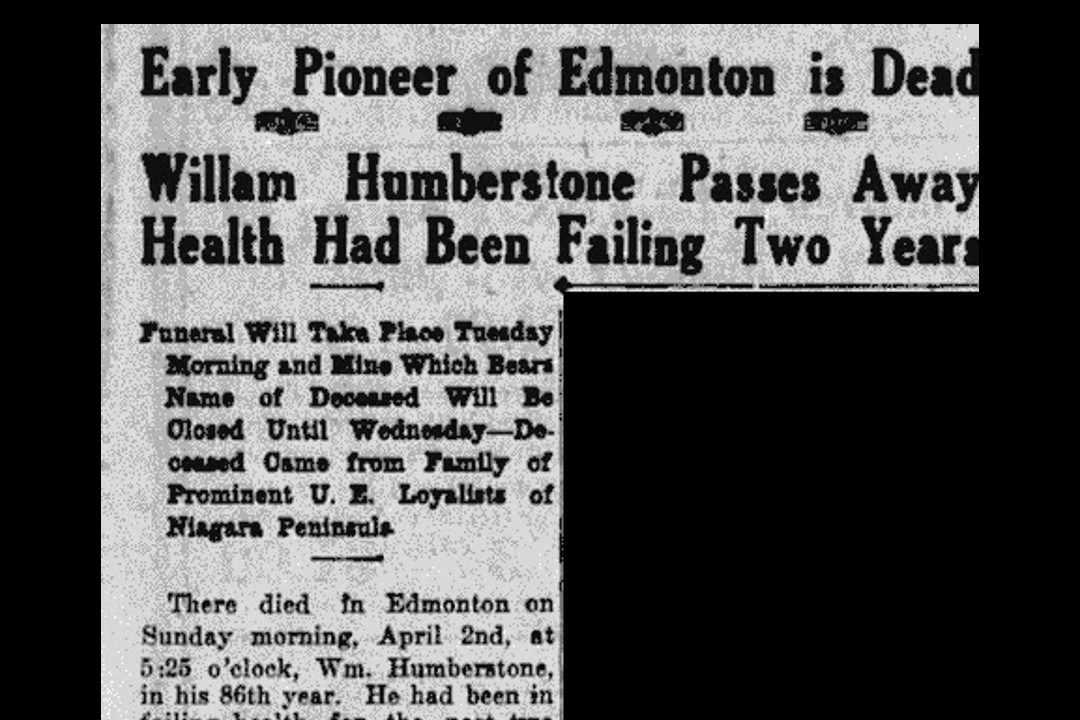On this day in 1922, the funeral for one member of an Edmonton mining power couple was being planned.
William Humberstone was more seasoned than most settlers who sought opportunity in Edmonton in the late 19th century. He was already 44 when he decided to hitch an ox to his cart and make the three-month journey from Winnipeg. After he arrived in 1880, Humberstone quickly built a way to make money, by harvesting coal from a simple mine in the river valley. Humberstone made his first coal delivery to Fort Edmonton later that year, using the same cart he arrived with (potentially pulled by the same ox). This was the start of a long, lucrative relationship with the Hudson's Bay Company.
The year 1899 proved to be a rollercoaster for Humberstone, though. He married his wife, Beata, who was 20 years younger. But the newlyweds soon had to deal with flooding on the North Saskatchewan River, which swept away many buildings in the river valley — including the couple's mine, some of their other businesses, and even their home.
The Humberstones weren't finished. Instead of rebuilding in the same spot, the pair moved their operation to the Clover Bar coal seam east of Edmonton. The Humberstone Coal Company, as well as other mines in the area, attracted mine workers to live nearby. This small community eventually grew into the town of Beverly, which was amalgamated with Edmonton in 1961.
In addition to the mine, the Humberstones built a farm, where they grew food to feed both mine workers and the horses the company used. Beata apparently grew chunky cabbages, too.
William fell ill in the mid-1910s and could no longer handle running the business, so he transferred operations to Beata. A woman in charge of a large coal mine was quite rare at the time, but the company flourished under Beata's management. Indeed, she reorganized the company, recruited new talent, and embraced new mining technology, resulting in extensive growth and higher productivity. By 1918, the Humberstone Coal Company employed around 200 miners.
William died in April 1922 at the age of 86. Beata returned to Germany, where she died roughly four years later. The coal company would continue to be run by the couple's former business partners, but it was closed during the Great Depression in the 1930s. The site of the mine was used as a landfill, and a septic system, before it was cleaned up and renamed Rundle Park.
Coal mining was a major part of early Edmonton's economy. It has left a lasting legacy, including a maze of collapsed tunnels that remain underneath parts of the city. Coal has played a big part in producing Alberta's energy, too, but that's changing. Due to its high carbon emissions and the environmental damage that mining can cause, coal has fallen out of favour. Last month, Alberta's electrical grid went 11 hours without drawing energy from coal-powered plants for the first time in decades. For the past two years, renewable energy has provided more electricity to the province's grid than coal.
This clipping was found on Vintage Edmonton, a daily look at Edmonton's history from armchair archivist @revRecluse of @VintageEdmonton.

